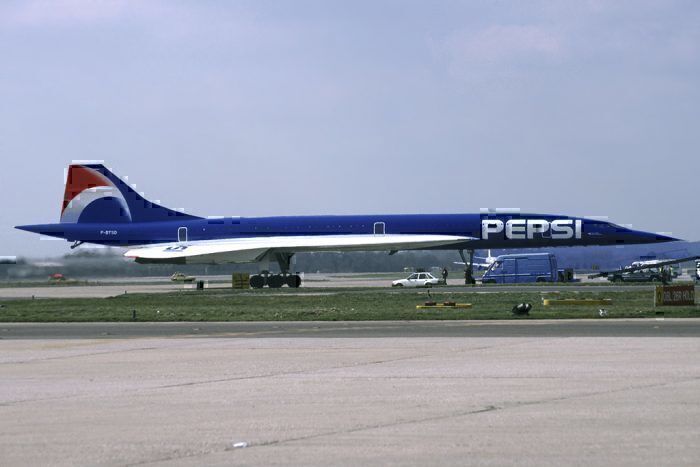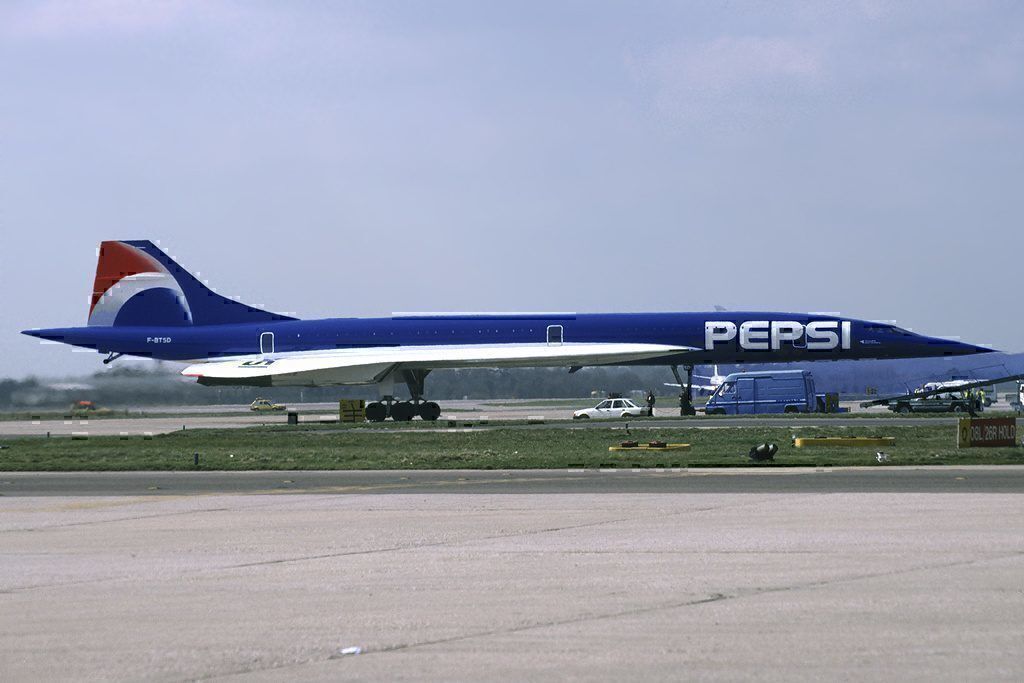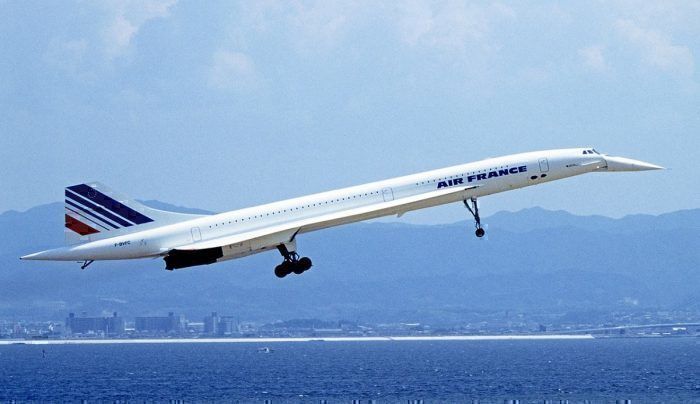Way back in the 90s, Pepsi wanted to rebrand its products with the now-iconic blue and red color scheme. To make an as big splash as possible, Pepsi repainted an Air France Concorde for two weeks. But, surprisingly, certain conditions of the makeover resulted in the aircraft unable to break the sound barrier for very long at all.
Why did Pepsi paint the aircraft?
This story does sound a little bit strange, but in the 90s bigger and better was the norm for marketing campaigns. At the time, nothing screamed louder or more action-packed than the world's fastest passenger jet. Likewise, Pepsi seemed to have no limit to their budget (over $500 million USD to rebrand the beverage line) and almost nothing seemed out of reach.
Pepsi chose to brand associate with the Concorde aircraft and planned a launch party in London, as reported by The Aviation Geek Club. However, they actually had to approach both British Airways and Air France to see which would be willing to accept their proposal. The story gets a little vague as to the actual offering but, in the end, it seems Pepsi awarded the contract to Air France.
As such, the aircraft needed to be entirely painted in the new blue color, with a big Pepsi logo on the tail. Air France insisted on keeping their name and logo (so passengers wouldn't think they were flying on a British Airways Concorde) and placed it just under the cockpit windows.
But for all this effort, the Pepsi Concorde was only ever allowed to fly up to Mach 2.02 for 20 minutes per flight.
Why did this limit supersonic travel?
There is a reason that every Concorde that you see is painted white. Simply put, the color white radiates and reflects heat far more effectively than darker colors.
According to the story, Air France had to contact the builders of the Concorde to ask if the painting could be done. They got permission for the main fuselage but were denied to paint the wings anything but white. This was due to fears of the stored fuel heating up during the flight.
As the paint was a darker color, it would interfere with the heat radiation as the aircraft flew at supersonic speeds. Over 20 minutes and the fuselage would have been heated up to beyond its limits. Plus, it is likely that the paint itself would have melted or could even have combusted.
It took over 2,000 hours and 200 liters of paint to complete this job. Once done, the aircraft was securely wrapped up in brown paper to hide the new livery.
Where did Pepsi use the aircraft?
Once the job was complete, Pepsi flew the aircraft at night from Paris Orly all the way to London Gatwick and wheeled it right into a hanger. A few days later Pepsi launched the brand with the aircraft front and center, featuring models and hundreds of members of the press.
The aircraft, dubbed Serria Delta, would go on to perform 16 flights for Pepsi, flying across Europe and the Middle East. These flights were buyable by passengers or given away as part of the promotion, and despite flying most of the time at a non-supersonic Mach 0.7, the aircraft did break the sound barrier for a short time on almost all of the trips.
This specific Concorde ended up in Paris when it was retired, at the same airport that the Paris Air Show is held; Le Bourget.
What do you think of the blue Concorde? Would you have like to fly in it? Let us know!


